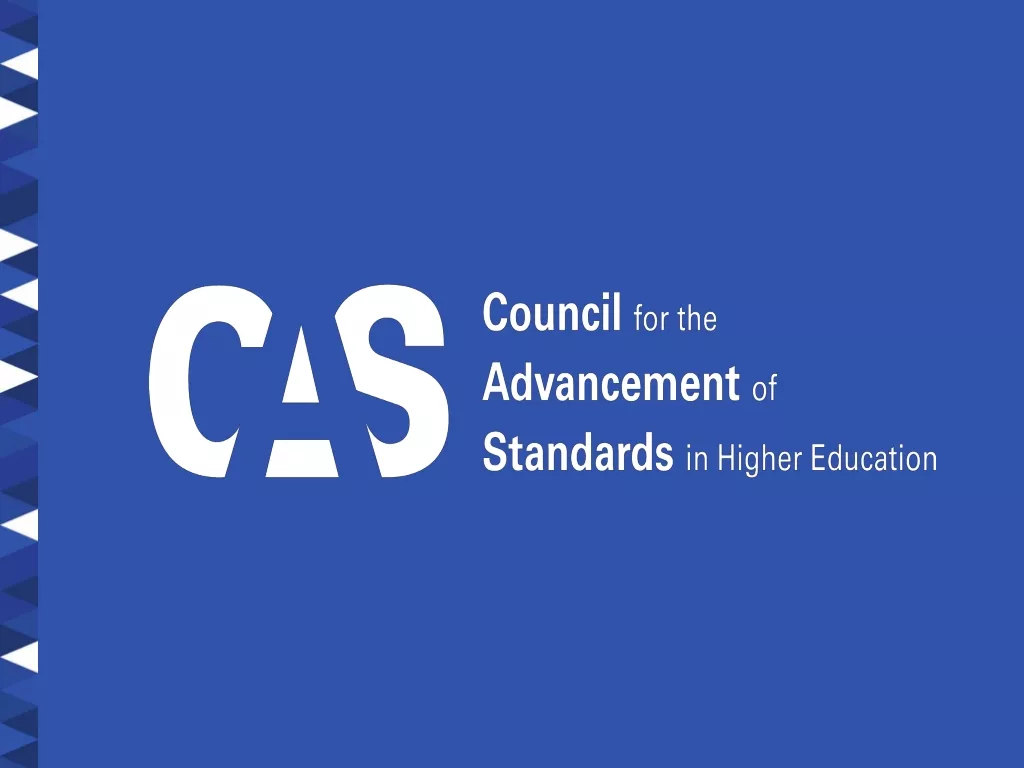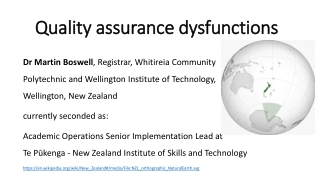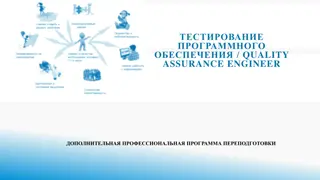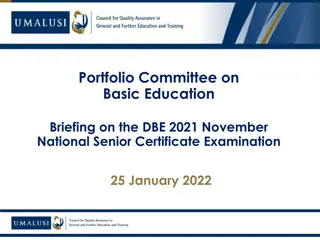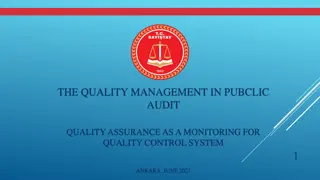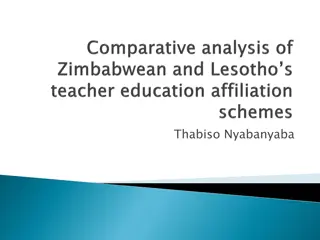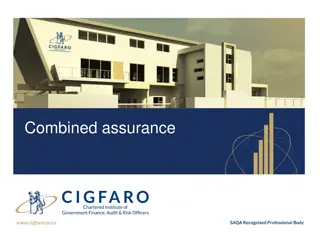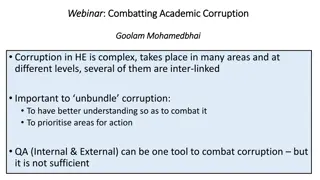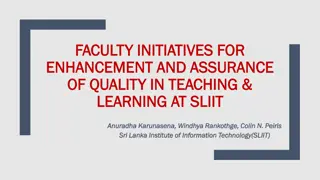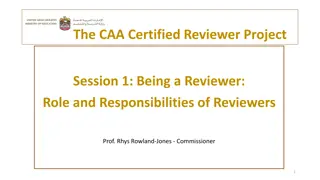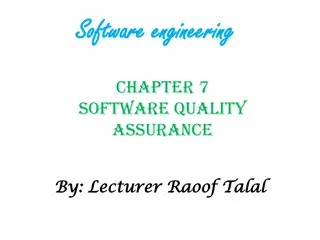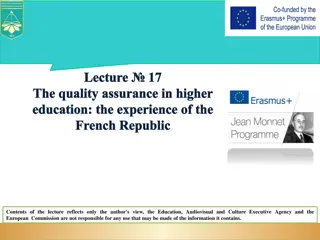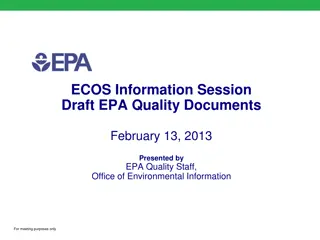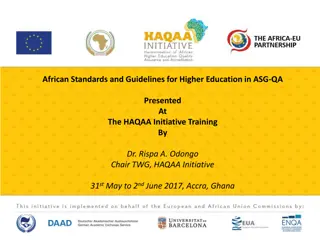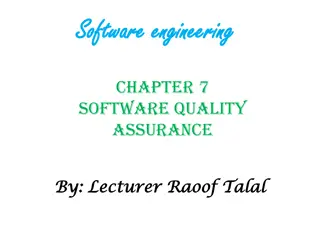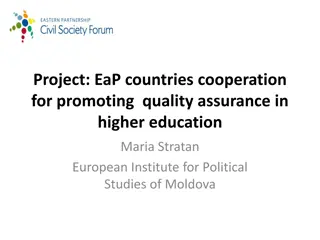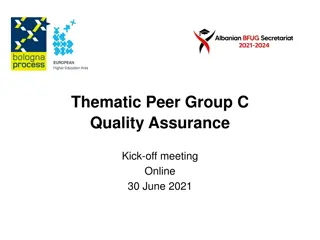External Quality Assurance in Higher Education: Standards and Guidelines
This document outlines the standards and guidelines for External Quality Assurance (EQA) in higher education institutions in Africa. It covers the objectives, design, implementation processes, independence of evaluation, periodic review, and handling of complaints and appeals related to EQA. Examples of EQA standards with guidelines are provided, emphasizing the importance of pre-defined, reliable, and consistently implemented criteria. The EQA process involves self-assessment, peer assessment, site visits, and reporting mechanisms to ensure accountability and quality enhancement.
Download Presentation

Please find below an Image/Link to download the presentation.
The content on the website is provided AS IS for your information and personal use only. It may not be sold, licensed, or shared on other websites without obtaining consent from the author.If you encounter any issues during the download, it is possible that the publisher has removed the file from their server.
You are allowed to download the files provided on this website for personal or commercial use, subject to the condition that they are used lawfully. All files are the property of their respective owners.
The content on the website is provided AS IS for your information and personal use only. It may not be sold, licensed, or shared on other websites without obtaining consent from the author.
E N D
Presentation Transcript
Standards and Guidelines for Quality Assurance in Higher Education in Africa (ASG-QA: PART B: EQA and PART C: QAAs) Presented at: CONSULTATIVE WORKSHOPS ON AFRICAN STANDRDS AND GUIDELINES FOR QUALITY ASSURANCE IN HGHER EDUCATION 15th-17thNovember 2017 Addis Ababa, Ethiopia Presenter: Dr. Rispa Odongo Chair, of Technical Working Group (TWG)
Part B: External Quality Assurance (EQA) Part B describes the methodologies (or standards) used by QAAs for external quality assurance of higher education institutions. EQA ensures HEIs subject themselves to periodic external assessment for accountability and quality enhancement. EQA takes into account the standards and guidelines in Part A (IQA) to: Ensure that IQA examined is relevant to and efficient for the concerned higher education institution, and Ensure there is consistency between internal quality assurance by institutions themselves and external quality assurance.
Areas Covered 1. 2. 3. 4. 5. 6. 7. Objectives of EQA and Consideration for IQA Designing External Quality Assurance Mechanisms Fit-for-Purpose Implementation Processes of EQA Independence of Evaluation Decision and Reporting of EQA Outcomes Periodic Review of Institutions and Programmes Complaints and Appeals
3. Standard The criteria, processes, and procedures for EQA shall be pre-defined, reliable, published, and consistently implemented for purposes of accountability. Implementation Processes of EQA Guidelines EQA is carried out professionally, consistently and transparently to ensure it is acceptable to HEIs. EQA is done on the basis of the self-assessment/self-evaluation by the HEIs. EQA process include: a) Self-assessment/self-evaluation by the HEI and Self-Assessment Report (SAR)/Self- Evaluation Report (SER); b) Assessment of SAR/SER by Panel of Peers c) Site visit to the institution - Interviews stakeholders, verify facilities and documentary evidence for quality. d) Exit Oral Report by Peers to HEI Management before the Review Panel leaves the institution; e) Preliminary report provided to the institution for confirmation of factual data f) Final report of the external review prepared. g) Follow up on recommendations
4. Independence of Evaluation Standard EQA shall be carried out by panels of external experts/peer reviewers drawn from a wide range of expertise and experience. Guidelines Best practices of EQA is based on the consistent use of a wide range of expertise and experiences: a) Peer reviewers are drawn from academics, employers or professional practitioners, and students; b) To ensure professionalism, consistency and transparency of output of experts/peer reviewers, it is necessary that they: Are carefully selected, Have appropriate skills and competency to perform tasks assigned to them, Are adequately inducted on EQA principles and procedures before undertaking the external review, and Are independent, no -conflict-of-interest, sign a Declaration of Independence Form ;
Guidelines (continued) c) In the case of possible conflict of interest, the institution is given the opportunity to object to any member of the proposed review panel; and d) Involvement of international experts is considered a good practice in EQA.
6. Periodic Review of Institutions and Programmes Standard External quality assurance of institutions and programmes should be undertaken on a cyclical basis. Guidelines a) The length of the review cycle is clearly defined and published: b) For academic programmes, the review cycle is consistent with the duration of the programme; c) Depending on the context of the quality assurance system, for institutions, the cyclical institutional review is carried out preferably every five years; and d) Every cyclical review results in a report of general findings of the review.
7. Standard Processes of lodging complaints and appeals should be clearly defined and communicated to the institution concerned. Complaints and Appeals Guidelines Safeguard the rights of the HEI and ensure fairness in the decision-making process. There is a process for HEI to raise issues of concern with the QAA if it can demonstrate that the outcome of the external review is not based on sound evidence. It is, therefore, critical that: a) There is established an appeals system/committee/board; b) The institution is allowed to raise issues of concern consistent with the appeals system; c) There are clearly defined complaints and appeals processes and procedures, which are consistently applied; and d) Appeals are handled professionally, are consistently applied, and feedback is provided.
Part C: Internal Quality Assurance for Quality Assurance Agencies Part C of the ASG-QA is for the purpose of internal quality assurance of QAAs. It involves the following: Self-assessment by QAA s of its policies, practices, procedures and activities; and/or External assessment by another body/peer organisation.
Areas Covered 1. 2. 3. 4. 5. 6. 7. 8. Legal Status Vision and Mission Statement Policies, Processes and Activities Financial and Human Resources Independence of QAA Internal Quality Assurance Criteria and Processes Benchmarking, Networking and Collaboration Periodic Review of QAAs
2. Independence of QAA Standard The QAA shall be independent and autonomous in its operations, outcomes, judgements and decisions. Guidelines The QAA make independent decisions and judgements that are not subject to change by third parties. Independence of an agency includes the following: a) Organisational independence - demonstrated by official documentation, such as legislative acts or statutes and instruments of governance, that stipulate the independence of the agency s work from third parties (e.g. HEIs, governments, other stakeholders). b) Operational independence - the definitions and operations of the agency s procedures and methods, nomination and appointment of qualified external experts (including the provision of no objection). c) Independence of formal outcomes the final decision of quality assurance activity remains the responsibility of the QAA even if experts / peers are involved in the quality assurance activity.
3. Vision and Mission Statement Standard The QAA shall have written and published vision and mission statements or set of objectives taking cognisance of the higher education context. Guidelines The vision, mission and objectives show that: a) EQA is the major activity of the agency; b) There is a systematic approach to achieving the vision, mission and objectives of the QAA; c) The objectives are implemented in line with a practical management plan that is linked to the agency s resources; and d) The ownership and governance structure is appropriate for the mandate and objectives of the agency.
6. Financial and Human Resources Standard The QAA shall have adequate and appropriate human, financial and material resources to carry out its quality assurance mandate effectively and efficiently. Guidelines Due to the public interest of the QAA and the importance of higher education institutions, the QAA is adequately funded to: a) Recruit adequate and qualified human resources, to carry out its external quality assurance activities; cognisant of gender, disadvantaged groups and persons with disabilities; b) Carry out its external quality assurance mandate professionally, effectively and efficiently; c) Ensure improvement of its practices and development; and d) Inform the public about its activities and results/outcomes.
8. Periodic Review of QAAs Standard The QAA shall undergo periodic internal and external reviews in order to demonstrate its compliance with the ASG-QA. Guidelines The QAA has a system for continuous quality assurance of its own practices and activities that emphasises flexibility in response to the changing nature of higher education, effectiveness of its operations, and its contribution towards the achievement of its objectives. The QAA, therefore: a) Conducts a comprehensive internal self-assessment of its processes, practices and activities periodically, including data analysis; b) Subjects itself to periodic external review on the basis of self-assessment every five years by regional, continental or international quality assurance bodies; and c) Ensures that required recommendations are disclosed and implemented for improvement.
Challenges Faced During Drafting Process ODL Stand alone or Incorporate into IQA (HEIs) finally incorporated into IQA Students support stand alone or incorporated into / Student Recruitment, Admission, Support Services and Certification. The number of standards Too many merged a number of them. Guidelines - level of details Translation challenges words mean different things in different languages. Gender or / Inclusiveness Independence / autonomy of QAA implication on source of funding.
Working Document - Part A: IQA Zero Document Part A: IQA Draft 1 Part A: IQA 1. Vision, Mission, and Goals Objectives 1. Vision, Mission, and Strategic Objectives (2) 1. Vision, Mission, and Strategic Objectives 2. Planning and Strategic Development (Policy Plan) 2. Governance and Administration 2. Governance and Administration 3. Governance and Administration 3. Human Resources 3. Human Resources 4. Human Resources (Academic Staff / Teaching Staff) 4. Pre-testing or Piloting of Learning Materials 4. Design, Approval and Monitoring of Programmes (4) 5. Design and Approval of Academic Programmes 5. Design and Approval of Programmes 5. Teaching, Active Learning and Assessment 6. Teaching and Learning 6. Teaching, Active Learning and Assessment (11) 6. Infrastructure and Facilities 7. Facilities and Infrastructure 7. Infrastructure Facilities and Students Support Services (10) 7. Student Recruitment, Admission, Support Services and Certification 8. Linkage with Industry 8.. Student recruitment, admission, progression and certification 8. Research and Innovation 9. Student Recruitment and Admission 9. Postgraduate Studies, Research and Innovation (12), (18) 9. Community Engagement 10. Student Support Service 10. Community Engagement 10. Information Management 11. Student Assessment 11. Information Management 11. Public Communication (12) 12. Management of Postgraduate Studies 12. Advertising and Public Communication 12. Cooperation, Staff and Student Mobility 13. Research and Innovation 13. Cooperation, Staff and Student Mobility (16) 13. Financial Resource Management 14. Community Engagement 14. Financial Resource Management 15. Information Management 16. Collaboration (Internationalization)
Working Document - Part B: EQA Zero Document Part B: EQA Draft 1 Part B: EQA 1. Principles of EQA 1. Objectives of EQA and Consideration for IQA (1), (2), (3) 1. Objectives of EQA and Consideration for IQA 2. Mission (EQA Policy)) 2. Designing Mechanisms Fit-For- Purpose 2. Designing Mechanisms Fit- For-Purpose 3. Objectives of EQA 3. Implementation Processes of EQ 3. Implementation Processes of EQ 4. Designing Methodologies fit-for-purpose (Standards and Guidelines and Processes foe EQA) 4. Independence of Evaluation 4. Independence of Evaluation 5. Implementation Processes (Consideration of IQA) 5. Decision and Reporting of EQA Outcomes (7), (8) 5. Decision and Reporting of EQA Outcomes 6. Independence of Evaluation (Use of Peer Review Experts) 6. Periodic Review of Institutions and Programmes 6. Periodic Review of Institutions and Programmes 7. Decisions of EQA Activities (Outcomes) 7. Complaints and Appeals 7. Complaints and Appeals 8. Reporting of EQA Activities (Disclosure) 9. Periodic Review of Institutions and Programmes 10. Complaints and Appeals 11. Coherence of National and Regional Policies and Practices
Working Document - Part C: QAA Zero Document Part BC QAA Draft 1 Part BC QAA 1. Legal Status of QAA (Official Status) 1. Policies, Processes and Activities of Quality Assurance Agency (6) 1. Legal Status 2. Mission Statement and Governance 2. Legal Status 2. Vision and Mission Statement 3. Resources 3. Vision and Mission Statement 3. Policies, Processes and Activities of Quality Assurance Agency 4. Independence of QAA 4. Financial and Human Resources 4. Financial and Human Resources 5. External Quality Assurance Criteria and Processes used by QAA (Thematic Analysis) 5. Independence of QAA 5. Independence of QAA 6. Activities for Quality Assurance 6. Internal Quality Assurance Criteria and Processes Used by QAA (8) 6. Internal Quality Assurance Criteria and Processes Used by QAA 7. Periodic and Institutional and Programme Review 7. Benchmarking, Networking and Collaboration 7. Benchmarking, Networking and Collaboration 8. Accountability (Internal Quality Assurance and Professional Conduct) 8. Periodic Review of QAAs 8. Periodic Review of QAAs 9. Exyternal Review of QAA 10. Benchmarking, Networking and Collaboration
Summary: It is hoped that these standards and guidelines will ensure quality provision and enhancement of quality in higher education in Africa, and the development of a sustainable quality culture for competitive higher education. HAVE A QUALITY DAY Thank you and God bless



